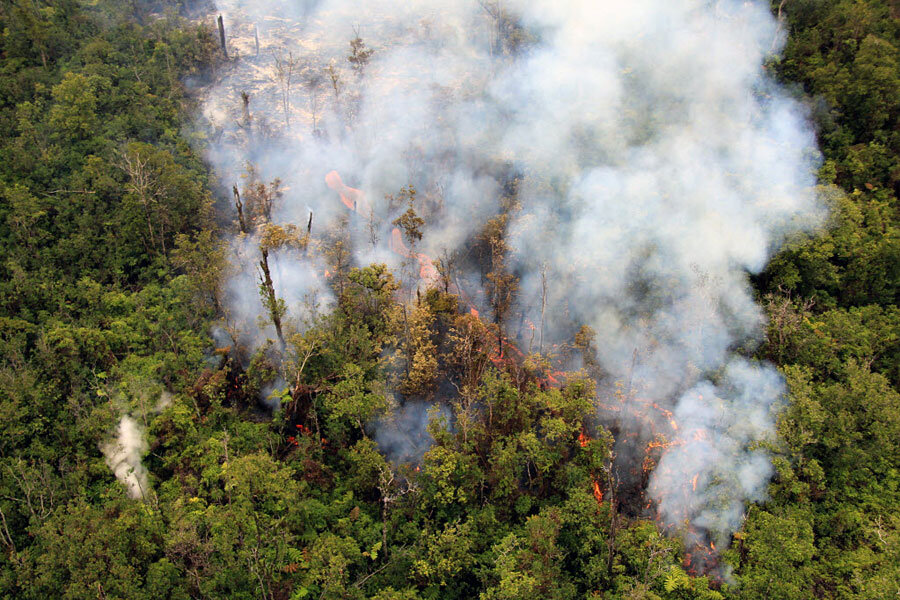Watchful eyes on Hawaii's Big Island as lava approaches homes
Loading...
| Honolulu
Hawaii scientists and officials raised the alert level on Thursday for residents whose homes stand in the path of an approaching lava flow creeping through a forest reserve toward their community from the Kilauea Volcano on the Big Island.
Scientists at the Hawaiian Volcano Observatory projected that, with the flow advancing an average of 820 feet a day, the lava could reach the Kaohe Homesteads subdivision within five to seven days.
The threat level was raised from a "watch" to a "warning" after the lava crept on Wednesday to within a mile of the outer edge of the Wa Kele o Puna Forest Reserve, which is one-tenth of a mile from some of the estimated 30 to 50 homes in the Kaohe Homesteads subdivision.
"There is now a higher risk for the lava flow to affect the subdivision," Hawaii County Civil Defense chief Daryl Oliveira said.
Civil Defense said no evacuation was yet required. A reconnaissance flight over the flow on Thursday morning showed the lava moving very slowly, having advanced approximately the length of a football field since Wednesday, the agency said.
But Big Island resident Jerry Konanui said he has already begun evacuating his farm in Kaohe Homestead, saying road access to his property could soon be blocked.
After a day of hauling lumber, cattle fencing and other materials to a friend's property an hour north, Konanui returned to Kaohe Wednesday to load and secure his tractor and to plan for the rest of his evacuation.
"Cousins and friends are coming to help load my brother's trailer with roofing materials and other stuff, then off to Panaewa to a friend's farm lot," he said.
Big Island Mayor Billy Kenoi declared a state of emergency for the area Thursday, citing both potential harm to residents and homes as well as the risk posed to area roads.
The mayor's office said more than 8,000 people would be affected if the lava overtakes portions of Highway 130, the only major route servicing the surrounding lower Puna area.
Big Island Civil Defense has begun restricting subdivision access to residents, keeping onlookers away in order to ease congestion for those wishing to evacuate voluntarily.
The Kilauea volcano has continuously erupted from its Pu'u O'o vent since 1983. The latest lava flow began on June 27.
The last home destroyed by lava on the Big Island was at the Royal Gardens subdivision in Kalapana in 2012, Oliveira said.







